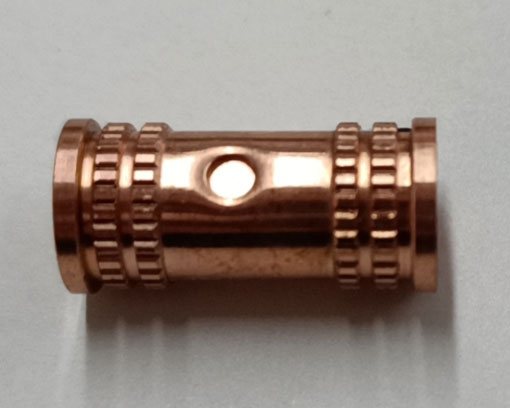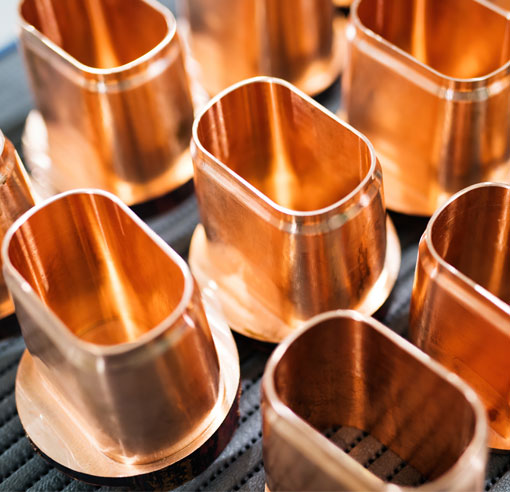Copper is a highly versatile and widely used metal in various industries, including electronics, construction, and manufacturing. Its excellent thermal and electrical conductivity, corrosion resistance, and ductility make it an ideal material for numerous applications. Machining copper parts is a critical process in the production of components for various industries. In this blog post, we will discuss the techniques and best practices for machining copper parts to achieve optimal results.
Characteristics of Copper
Copper is a soft, ductile, and malleable metal, making it relatively easy to machine. However, its high thermal conductivity may cause difficulties during machining, as heat is quickly dissipated from the cutting zone. This can lead to tool wear and reduced tool life. Therefore, it is essential to use appropriate cutting tools, coolants, and machining parameters to ensure the successful machining of copper parts.
Machining Techniques for Copper Parts
There are several machining techniques used for copper parts, including milling, turning, drilling, and grinding. Each method has its advantages and disadvantages, depending on the specific application and desired outcome.
Milling
Milling is a versatile machining process that involves the use of a rotating cutting tool to remove material from a workpiece. It is suitable for producing flat or irregular surfaces, slots, and grooves in copper parts. High-speed milling is often employed to achieve high material removal rates and reduce machining time. The use of carbide cutting tools with sharp cutting edges and proper coolant is essential to prevent tool wear and prolong tool life.
Turning
Turning is a process in which a workpiece is rotated while a cutting tool moves along its surface, removing material. This technique is commonly used for producing cylindrical copper parts, such as rods, tubes, and bushings. The key to successful turning of copper is selecting the right cutting tool material, geometry, and cutting parameters. Carbide tools with sharp cutting edges and positive rake angles are recommended for turning copper.
Drilling
Drilling is the process of creating holes in a workpiece using a rotating cutting tool called a drill bit. Copper is a soft material, and drilling can be challenging due to its tendency to stick to the cutting edges of the drill bit. To minimize this issue, it is essential to use drill bits with appropriate coatings, such as titanium nitride (TiN) or diamond-like carbon (DLC). Additionally, proper coolant and cutting parameters must be employed to ensure smooth and accurate drilling.
Grinding
Grinding is a finishing process that uses an abrasive wheel to remove small amounts of material from a workpiece's surface. This technique is often used to achieve high surface finish and dimensional accuracy in copper parts. The use of proper grinding wheels, coolant, and grinding parameters is crucial for successful grinding of copper.
Best Practices for Machining Copper Parts
To ensure optimal results when machining copper parts, consider the following best practices:
1. Choose the right cutting tools: Select cutting tools made from materials such as carbide or high-speed steel (HSS) with sharp cutting edges and appropriate coatings to minimize tool wear and improve performance.
2. Optimize cutting parameters: Adjust cutting speed, feed rate, and depth of cut to achieve the desired material removal rate while minimizing heat generation and tool wear.
3. Use proper coolant: Employ a suitable coolant to reduce heat buildup in the cutting zone and prolong tool life. Coolants with high lubricity and cooling properties are recommended for machining copper.
4. Maintain tool sharpness: Regularly inspect and sharpen cutting tools to maintain their cutting edge and performance.
5. Ensure proper workholding: Secure the workpiece firmly in the machine to prevent movement during machining and ensure dimensional accuracy.
6. Implement appropriate chip control: Use chip breakers and proper cutting parameters to manage chip formation and removal, preventing chip-related issues such as tool breakage or workpiece damage.
7. Monitor tool wear: Continuously monitor tool wear and replace worn tools promptly to maintain machining performance and quality.
By following these techniques and best practices, you can achieve optimal results when machining copper parts. Proper planning and execution of the machining process will ensure the production of high-quality components that meet the desired specifications and requirements for various applications.













